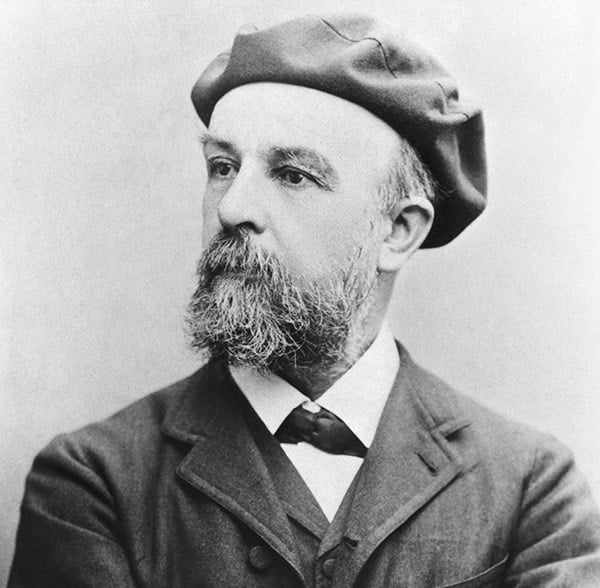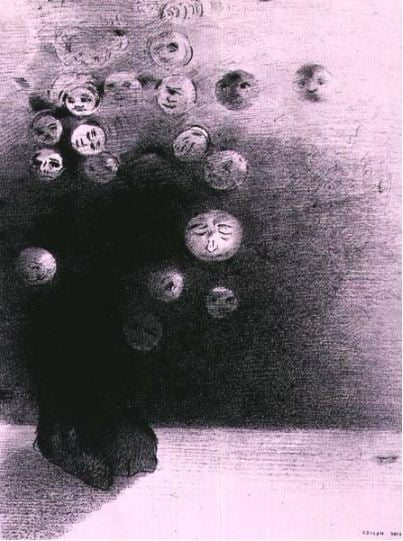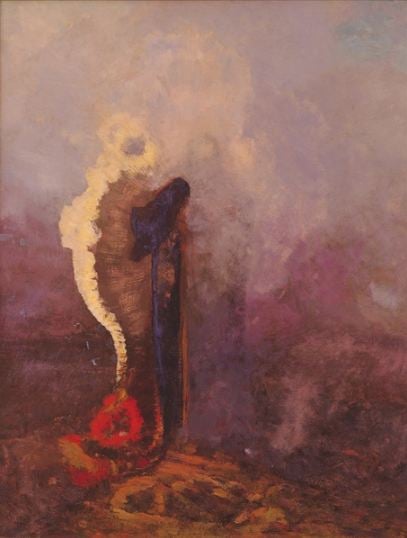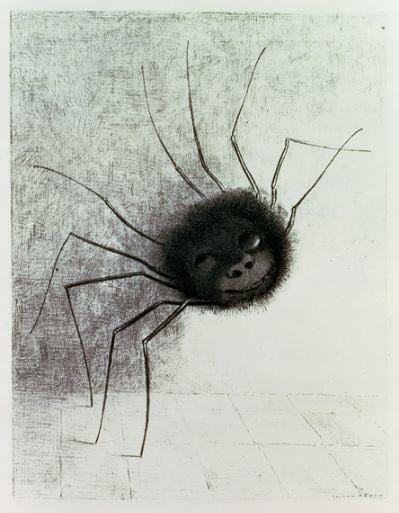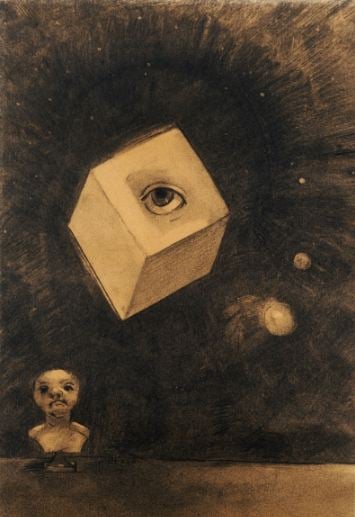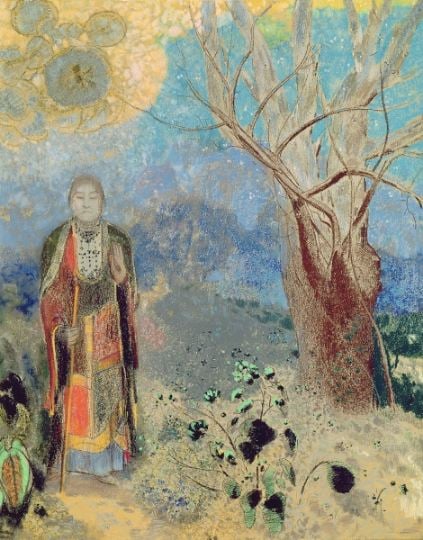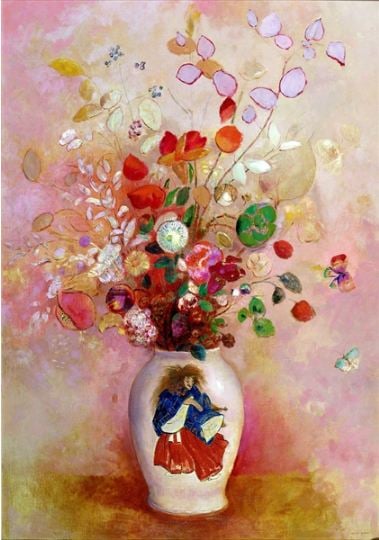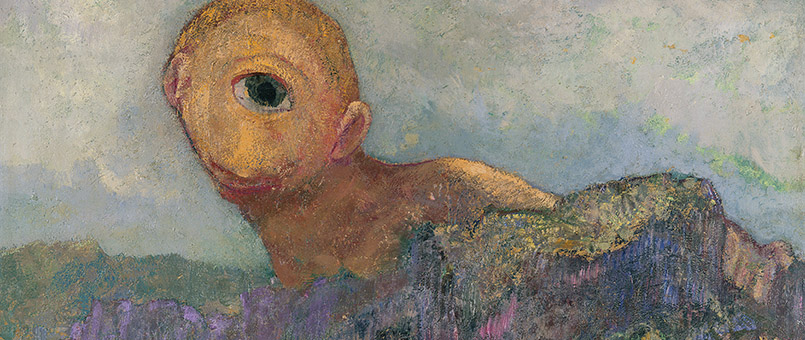
Odilon Redon: 100 years
The 6th July, 2016 marks a century since the death of the French symbolist painter, printmaker, draughtsman and pastellist, Odilon Redon. Discover his enchanting works and the inspirations behind them:
Early talent
Odilon Redon (1840-1916) , Guy & Mockel (19th-20th century) / Archives Larousse, Paris, France
Odilon Redon began drawing as a child and at the early age of ten he had already been awarded a drawing prize at school. He began formally studying drawing at fifteen before switching to architecture at his father’s insistence, although he failed to master this discipline. He then took up sculpting back in his hometown of Bordeaux where French engraver Rodolphe Bresdin mentored him in lithography and etching. Redon finally gained recognition in 1878 with Guardian Spirit of the Waters and his first album of lithographs, Dans le Rêve, in 1879.
Capturing the imagination
Redon’s work is an exploration of his psyche and internal feelings. His art has been described as ‘a synthesis of nightmares and dreams’ as they feature bizarre and fantastical figures from the artist’s own vivid imagination. You will notice that he often uses a seemingly cloudy backdrop of colours or shades to enhance the dream-like quality of his creations, even in his more traditional images.
He himself wanted to place ‘the logic of the visible at the service of the invisible’, as proven with his work titled: Why should there not exist an invisible world…? (below).
‘Why should there not exist an invisible world…?’, plate 6 from ‘Le Jure’ by Edmond Picard, 1887 (litho), Odilon Redon / Haags Gemeentemuseum, The Hague, Netherlands
The Dream, 1904 (oil on canvas), Odilon Redon / Private Collection
‘I have often, as an exercise and as a sustenance, painted before an object down to the smallest accidents of its visual appearance; but the day left me sad and with an unsatiated thirst. The next day I let the other source run, that of imagination, through the recollection of the forms and I was then reassured and appeased.’
In his journal, A Soi-même (To Myself) he explains his process and the driving inspirations behind his images, claiming that realist depictions of his environment left him unsatisfied:
The artist largely aimed to evoke mystery through his works and wanted them to remain as ambiguous and undefinable as possible:
‘My drawings inspire, and are not to be defined. They place us, as does music, in the ambiguous realm of the undetermined.’
‘Noir’ works
Smiling Spider, c.1881 (litho), Odilon Redon / Haags Gemeentemuseum, The Hague, Netherlands
Eye (charcoal on paper), Odilon Redon / Private Collection / Photo © Christie’s Images
These drawings denied classification and the limitations of painting, beckoning only the fantastic. Yet, despite their dark colour and subject matter, art historian Michael Gibson believes that Redon wanted his works to portray ‘the triumph of light over darkness’. The use of light spaces and the occasionally peaceful expressions of the spider and other odd figures certainly seems to suggest this. This friendly looking spider with a human face is among many of the Bridgeman team’s personal favourites from Redon’s oeuvre. It is part of his visionary collection of charcoal sketches and lithographs – his ‘noirs’ – that delved into the terrors of feverish dreams; sometimes the subjects relate to science and others to prehistoric times with ancestral figures and erratic, occasionally glacial, scenery.
Asian influences
The Buddha, c.1905 (pastel on paper), Odilon Redon / Musee d’Orsay, Paris, France
Bouquet of Flowers in a Japanese Vase, c.1905-08 (oil on canvas), Odilon Redon / Pola Museum of Art, Kanagawa, Japan
After his charcoal or ‘noir’ period came to a close during the 1890s, oils and pastels became Redon’s favoured media. Colours were important for his later works, which had heavy influences of Japonism and also demonstrated the artist’s avid interest in Buddhist and Hindu religion and culture. The figure of the Buddha featured increasingly in his work, such as in the painting The Death of the Buddha around 1899 and The Buddha in 1905.
What are your thoughts on Odilon Redon’s artworks? Let us know if you have any favourites!
Find out more
View all images by Odilon Redon
Redon’s works are now out of copyright. Get in touch at uksales@bridgemanimages.com if you have any queries about licensing.

